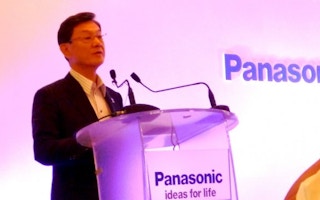Japanese electronics firm Panasonic announced yesterday it will build and test an integrated energy system in Singapore’s Punggol Eco-Town which could increase energy efficiency across public housing towns and advance the city-state’s smart grid pilot study.
The public-private partnership between Panasonic and three local agencies - the Economic Development Board (EDB), the Housing & Development Board (HDB) and the Energy Market Authority (EMA) - aims to integrate solar technology, fuel-cell batteries and Home Energy Management Systems (HEMS) into an existing public housing block.
Panasonic will install at Punggol 21, a block of 100 households, roof-top photovoltaic (PV) solar panels and lithium-ion batteries to store excess energy for night time power supply. The system will supply electricity for lifts, water pumps and lighting in the common areas, potentially resulting in a building with no carbon emissions from its common facilities.
Panasonic president Fumio Ohtsubo said that with more than 80 per cent of the population living in HDB housing, Singapore is an ideal pilot site for the company to use before expanding to other cities. “Singapore is well known for its excellent infrastructure and outstanding talent base, and is well positioned as a living lab for companies to test-bed their urban solutions before commercialising them,” he said.
To address household electricity use, Panasonic will install its energy management system, which enables residents to see where their electricity is going and how much they are consuming, in ten households within the block. The company will also replace existing air-conditioning units with new energy efficient units from Panasonic.
Panasonic’s director for its energy solution business promotion, Haruyuki Ishio, said that at 30 per cent, air conditioners are the largest consumers of electricity in tropical households. He added that Singapore could save an amount of energy equivalent to the capacity of a new power plant – about 10 per cent - by combining energy efficient air-conditioners with demand response technologies in all Singapore households.
Demand response technologies allow energy users to manage their consumption according to varying electricity rates or peak electricity times.
The system will be combined with smart meters installed in each household by EMA. The meters, which measure electricity, water and gas consumption, will send the data to a remote server, where it can be analysed by project managers.
EMA will use the data as part of its smart grid study, called Intelligent Energy System (IES), which started in 2009 to determine how best to balance Singapore’s electricity demand and distribution in preparation for future energy scenarios that include more renewable energy sources and electric vehicles.
EMA chief executive Chee Hong Tat said a smart grid could help Singapore’s utility manage peak energy demands through measures such as offering lower electricity rates for off-peak times and providing information to consumers about their energy use patterns. He added that a smart grid allows utilities to instantly detect and locate power outages.
The partnership with Panasonic will test the use of smart grid and smart meter technology both for household use and for integration of renewable energy sources into the grid until the end of 2013.
Mr Chee noted that the IES would be instrumental in managing energy from decentralised and intermittent power sources such as the Panasonic PV and battery system. “This will facilitate the deployment of clean energy sources like solar energy,” he said.
Other companies involved in the IES pilot project include Greenwave Reality, a Singapore-based company that develops home energy management systems and ST Electronics, a Singapore company developing communications technologies for smart utility applications. EMA has also partnered with several firms- Bosch, SingTel and Greenlots – to develop smart grid connected infrastructure for charging electric vehicles.
EDB’s deputy managing director, Tan Choon Shian, said the ease of public private partnerships with companies such as Panasonic was a key ingredient to the successful development of urban solutions.
He added that Singapore agencies are investing heavily in research and development, with recent commitments totalling S$495 million, to help grow the country’s clean technology and energy sectors.










